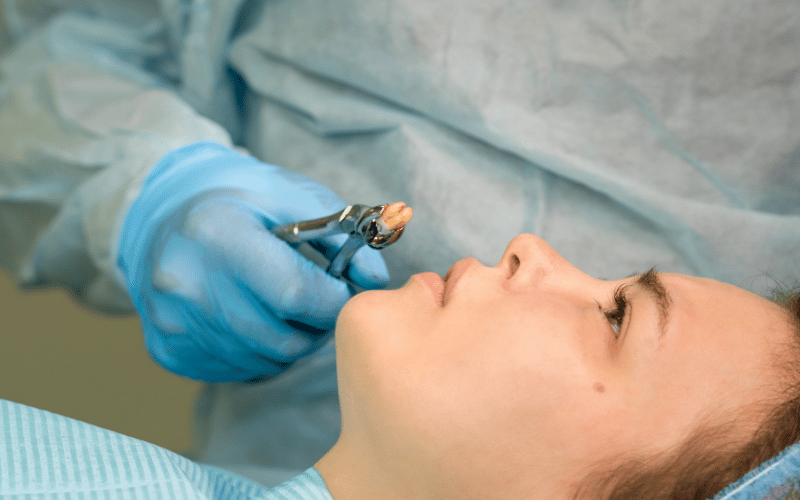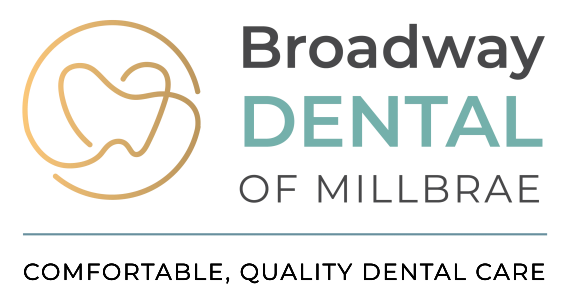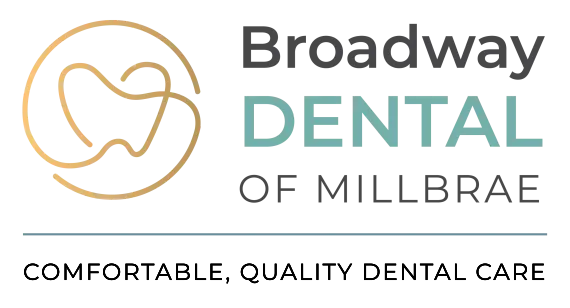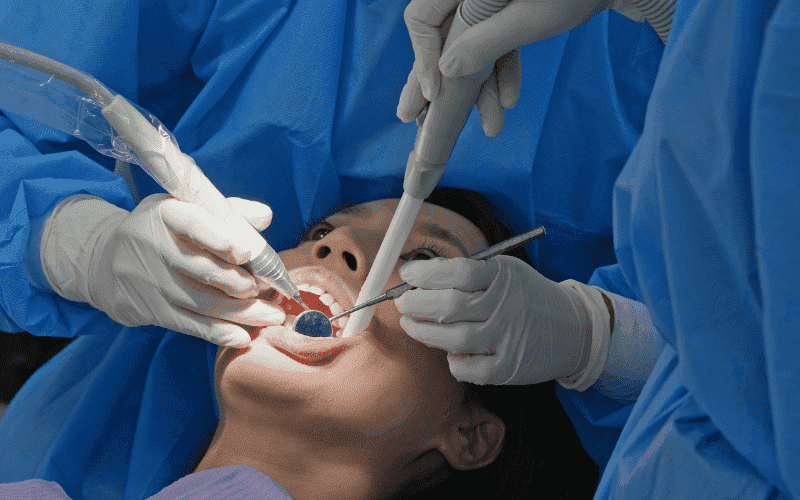Book Now
What is a Surgical Tooth Extraction?
Millbrae, CA

Tooth extraction is a routine dental procedure that most people undergo at some stage. It entails removing a tooth from its socket within the bone. While a standard extraction is straightforward, surgical tooth extraction is more complex and often required for various reasons.
Surgical tooth extraction involves a more intricate process, typically carried out when a tooth cannot be easily accessed or removed through simple extraction methods. This procedure is often necessary for impacted teeth, teeth broken at the gum line, or teeth with complex roots. The goal is to remove the tooth while minimizing trauma to the surrounding tissues.
During a surgical extraction, a dental surgeon makes a small incision in the gum to access the tooth. This approach ensures that the surrounding bone and tissues remain as intact as possible, promoting better healing and reducing the risk of complications.
The necessity for surgical extraction can arise from several conditions:
- Impacted Teeth: These are teeth that have not erupted properly and are stuck in the jawbone or gums.
- Broken Teeth: Teeth that are fractured or broken below the gum line require surgical extraction because there is not enough tooth structure to grasp for a standard extraction.
- Complex Root Structures: Teeth with unusually shaped or multiple roots that make extraction difficult may require a surgical approach.
Surgical extractions are typically performed by oral surgeons or dentists with specialized training. They involve advanced techniques and tools to ensure the tooth is removed safely and effectively.
What is the Difference Between a Tooth Extraction and a Surgical Extraction?
Understanding the difference between a standard tooth extraction and a surgical extraction is essential to grasp why certain situations necessitate a surgical approach.
Standard Tooth Extraction
A standard (or simple) tooth extraction is performed when a tooth is fully erupted and visible in the mouth.
- Anesthesia: The dentist administers local anesthesia to numb the area around the tooth.
- Loosening the Tooth: Using an instrument called an elevator, the dentist loosens the tooth from the socket.
- Removal: Once loose, the tooth is removed using forceps.
This procedure is typically quick, involves minimal surgical intervention, and has a straightforward recovery process.
Surgical Tooth Extraction
In contrast, surgical tooth extraction is more involved and used in situations where a tooth is not easily accessible or visible. This procedure includes:
- Incision: A small incision is made in the gum to access the tooth.
- Bone Removal: In some cases, a small amount of bone around the tooth may need to be removed to facilitate extraction.
- Tooth Sectioning: If the tooth is too large or has complex roots, it may be divided into smaller pieces for easier removal.
- Extraction: The tooth or its pieces are removed, and the area is cleaned.
The complexity of surgical extractions means they often take longer and may involve more postoperative care than simple extractions. Recovery can be more intensive, but the procedure allows for the removal of teeth that otherwise would pose significant challenges.
Is Surgical Tooth Extraction Painful?
Pain is a common concern for anyone facing dental surgery. Fortunately, modern advancements in dental anesthesia and pain management have significantly reduced the discomfort associated with surgical tooth extraction.
During the Procedure
During a surgical tooth extraction, the patient is typically under local anesthesia, which numbs the area around the tooth. In some cases, especially for more complex surgeries or anxious patients, conscious sedation or general anesthesia may be used. This ensures that the patient remains comfortable and experiences minimal pain during the procedure.
- Local Anesthesia: Numbs the specific area where the extraction will occur. Patients remain awake but do not feel pain.
- Conscious Sedation: Combines a sedative with local anesthesia, making the patient relaxed and less aware of the procedure.
- General Anesthesia: Used in more extensive surgeries or for highly anxious patients, it renders the patient completely unconscious.
Postoperative Pain
Postoperative pain varies from person to person and depends on the complexity of the extraction. Most patients experience some discomfort and swelling, which is typically manageable with over-the-counter pain relievers and prescribed medications.
- Pain Management: Dentists often recommend acetaminophen or ibuprofen. In some cases, stronger prescription pain medications may be provided.
- Swelling: Applying ice packs to the affected area can help reduce swelling.
- Rest: Adequate rest and avoiding strenuous activities help the healing process.
Follow-Up Care
Adhering to postoperative instructions provided by the dental surgeon is crucial for minimizing pain and promoting healing. These instructions may include:
- Avoiding certain foods: Soft foods are recommended initially.
- Maintaining oral hygiene: Gentle brushing and rinsing with salt water can help keep the extraction site clean.
- Avoiding smoking and alcohol: These can delay healing and increase the risk of complications.
With proper care, most patients find that any pain or discomfort diminishes significantly within a few days after surgery.
How Long Does a Surgical Tooth Extraction Last?
The duration of a surgical tooth extraction can vary based on several factors, including the tooth’s condition, the complexity of the extraction, and the patient’s overall health.
Procedure Duration
- Preoperative Preparation: Initial steps involve numbing the area and, if necessary, administering sedation. This phase typically lasts 10-20 minutes.
- Incision and Tooth Access: Making the incision and accessing the tooth can take 10-30 minutes, depending on the tooth’s position and condition.
- Tooth Removal: The actual removal of the tooth may take another 10-30 minutes. Teeth that are broken or have complex root structures may take longer.
- Postoperative Care: After the tooth is removed, the dental surgeon will clean the site, possibly place stitches, and provide postoperative instructions. This final phase can take 10-20 minutes.
Overall, a surgical tooth extraction procedure generally lasts between 45 minutes to an hour and a half. However, more complex cases can extend beyond this time frame.
Recovery Time
Recovery from a surgical tooth extraction also varies but generally follows a predictable timeline:
- Initial Recovery: The first 24-48 hours involve managing swelling and pain. It’s essential to follow postoperative care instructions closely during this period.
- Healing Period: Most patients experience significant improvement within a week, although full healing of the extraction site can take several weeks to months. Stitches, if used, may dissolve on their own or be removed in a follow-up appointment.
- Return to Normal Activities: Depending on the complexity of the surgery, patients can often return to their regular activities within a few days, with caution regarding strenuous activities.
Patients should schedule a follow-up visit with their dental surgeon to ensure proper healing and address any concerns.
What Happens During a Surgical Extraction?
Understanding what happens during a surgical tooth extraction can help alleviate anxiety and prepare patients for the procedure.
Preoperative Steps
- Consultation: Before the surgery, a consultation with the dental surgeon involves reviewing medical history, taking X-rays, and discussing the procedure.
- Anesthesia: On the day of the surgery, anesthesia is administered to ensure the patient is comfortable. This may include local anesthesia, sedation, or general anesthesia, depending on the case’s complexity.
During the Procedure
- Incision: A small incision is made in the gum to access the tooth. In cases where bone obstructs the tooth, a portion of the bone may be removed.
- Sectioning the Tooth: If the tooth is large or has complex roots, it may be divided into smaller pieces. This step allows for easier removal and minimizes trauma to surrounding tissues.
- Tooth Removal: Using specialized instruments, the dental surgeon carefully removes the tooth or its sections.
- Cleaning the Area: The extraction site is cleaned to remove any debris or bone fragments.
- Stitching: If necessary, stitches may be placed to promote healing and close the incision. These stitches can be absorbable or require removal at a follow-up appointment.
Postoperative Care
After the procedure, the patient is monitored until they are ready to go home. Postoperative instructions are provided to ensure proper care and healing of the extraction site. These instructions typically include pain management, dietary guidelines, and hygiene practices.
Can You Eat After Surgical Extraction?
Eating after a surgical tooth extraction requires careful consideration to promote healing and prevent complications.
Immediate Postoperative Period
In the hours following the extraction, it’s advisable to avoid eating until the anesthesia wears off to prevent biting the tongue or cheek. Once ready to eat, consider the following:
- Soft Foods: Opt for soft, easy-to-chew foods such as yogurt, mashed potatoes, or applesauce.
- Cold Foods: Cold items like ice cream or smoothies can help soothe the extraction site.
- Hydration: Stay hydrated by drinking water, but avoid using straws as the suction can dislodge the blood clot that forms in the extraction site.
First Few Days
During the initial days post-surgery, maintain a diet of soft foods and avoid hot, spicy, or crunchy items. Gradually reintroduce more solid foods as comfort permits. Recommended foods include:
- Soups (cooled): Ensure they are not too hot and avoid chunky ingredients.
- Scrambled Eggs: Easy to eat and nutritious.
- Puddings and Custards: Soft and soothing.
Avoiding Complications
To minimize the risk of complications like dry socket, follow these dietary guidelines:
- Avoid Straws: Suction from straws can disrupt the healing of blood clots.
- Chew on the Opposite Side: If possible, chew food on the side of the mouth opposite the extraction site.
- Avoid Alcohol and Smoking: These can impair healing and increase the risk of infection.
As healing progresses, you can gradually return to a normal diet but always prioritize foods that are gentle on the extraction site.
Surgical tooth extraction, while more complex than standard tooth removal, is a well-established procedure that addresses specific dental challenges. Whether dealing with impacted teeth, broken roots, or complex tooth structures, surgical extraction provides a safe and effective solution.
Understanding the process, from preoperative preparation to postoperative care, helps demystify the procedure and alleviates common concerns. Patients should always follow their dental surgeon’s instructions and attend follow-up appointments to ensure optimal healing.



